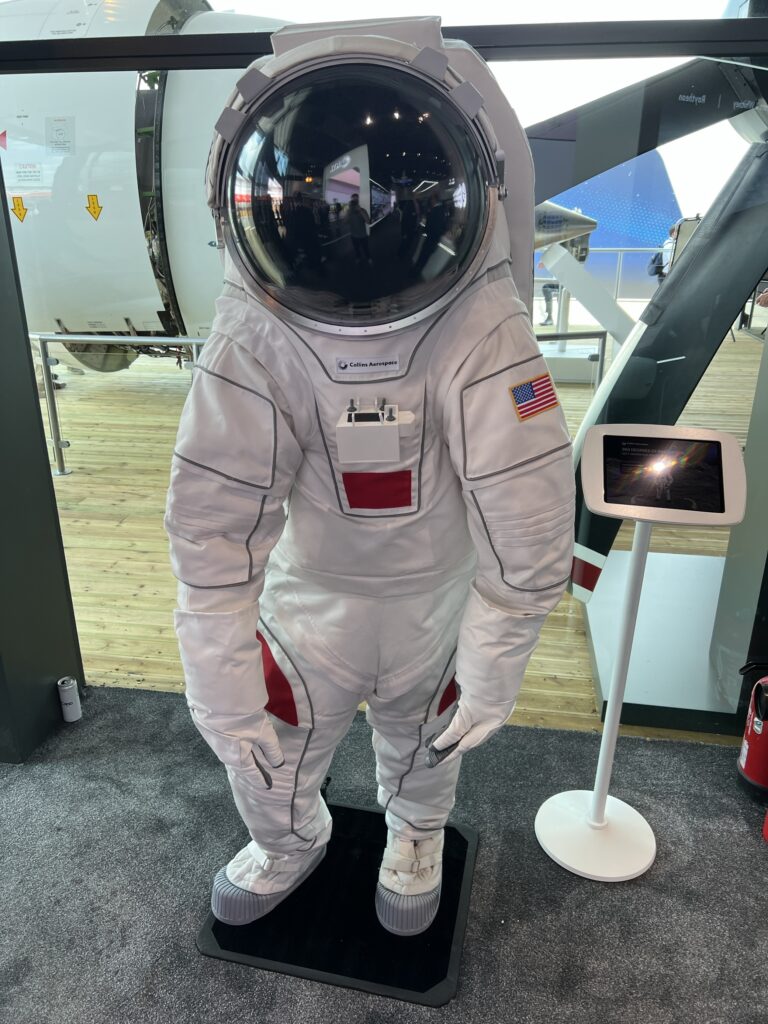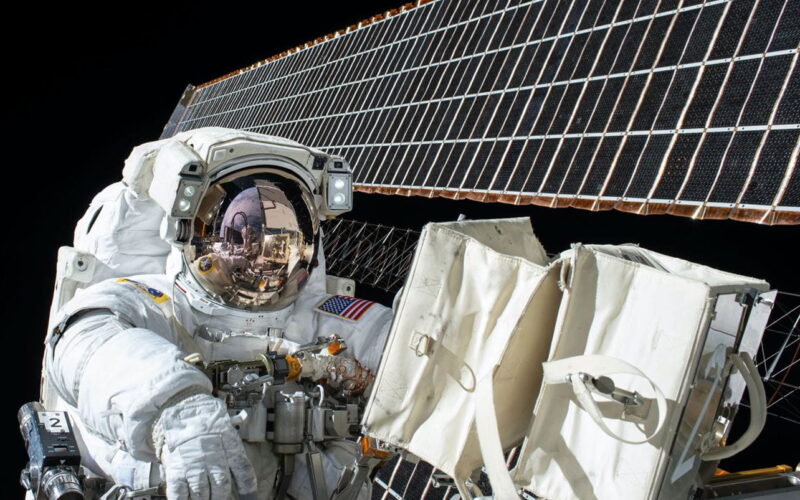During the Paris Air Show 2023, Collins Aerospace showcased its next-generation spacesuit which is set to replace the existing suits used on the International Space Station (ISS).
Developed in collaboration with ILC Dover and Oceaneering, this spacesuit features innovative advancements aimed at improving astronaut comfort, mobility, and mission flexibility.
One of the key highlights of the new spacesuit is its enhanced joint functionality, with new joints incorporated in the elbow and shoulders. These modifications allow for increased mobility and reduced fatigue during extravehicular activities.
The new spacesuit is designed to be compatible with the 1st percentile female to the 99th percentile male, addressing previous limitations and ensuring a more comfortable fit for a diverse range of astronauts, with the capability to accommodate a range of body sizes.
The larger suit size allows for greater mission choice, enabling NASA to assign astronauts with specific roles and tasks. Collaboration with NASA has been integral to the development of the spacesuit, particularly in improving tool usage and movement capabilities.
“NASA being specific on which astronaut can do what, the larger suit allows them to have more mission choices,” Nick Eberheardt, Business Development for Missions Systems at Collins Aerospace, explained during a media briefing. “There were instances in the past where size limitations prevented ISS astronauts from conducting EVA [extravehicular activity] missions.”
Composed of more than 18,000 parts, the next-generation spacesuit incorporates several technological advancements to improve astronaut safety and performance. The suit features an upgraded portable life support system with a new cooling system, and an advanced carbon dioxide removal system, enhancing breathing time by an additional 30 minutes. It utilizes fabric developed by ILC Dover, specifically designed to resist micrometeorite impacts.
Finally, the suit’s weight has been dramatically reduced from 125 kilograms (275 pounds) to 90 kilograms (200 pounds). Though this has no impact in zero gravity, it makes the suit more maneuverable in low gravity, hinting at potential applications on the Moon or even Mars. With 90% compatibility for the upcoming Artemis mission, Collins Aerospace is poised to play a vital role in future space exploration efforts.
Still in the design phase, the new spacesuit is expected to be ready for NASA’s use by 2026. A test model has already been built and utilized. NASA awarded the contract to design, develop and demonstrate the next-generation spacesuit for the ISS to Collins Aerospace in December 2022.


